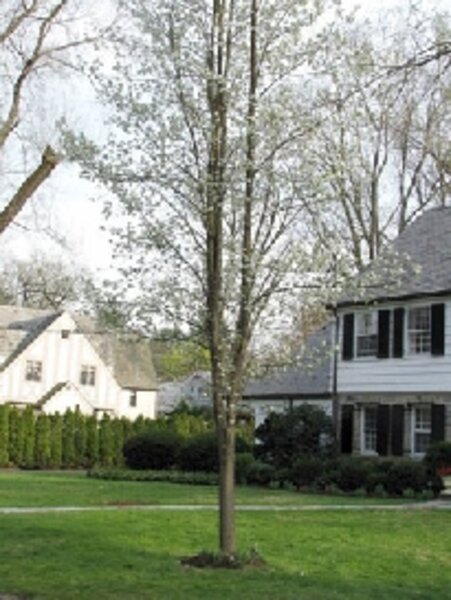A primer on pruning young trees
Loading...
So you planted trees this spring. Those trees' first years in the ground — and especially this very first year — are important to their future strength and beauty.
Pruning is one way to direct development of what will become their permanent limbs, and the best time for this pruning is while the trees are still small. Small cuts made on small trees leave correspondingly small wounds.
Promote the top dog
Help your young tree to develop a sturdy trunk. For most trees, this means allowing only a single stem to be the main axis. Let this stem be the most vertical, strongest one. Shorten, cut away or bend down any other stems competing for the role of top dog.
If you plan to restrict the height of your tree by pruning, begin before the tree reaches its desired height. Stop upward progress of that central stem by cutting it back to a weak, horizontal branch.
Done early on, only a small cut is needed and the crown of the tree will retain a natural upward flow to gradually smaller branches, rather than looking as if it has been butchered.
Branching out
Also help your young tree build up a framework of permanent side branches that are strong, well-connected and, of course, look good.
Don't select permanent branches starting too low on the trunk though, because the distance of any of them from the ground never changes. Start selecting those main branches by gazing along the trunk and keeping in mind three ideals: Successive main branches should be spaced six to 12 inches apart (the larger the eventual tree size, the further the spacing), should spiral up the trunk, and should come out at wide angles.
This spacing and spiral arrangement ensure that each branch has sufficient nourishment and room to develop. The wide angle is a sign of a strong union. If a narrow-angled branch is particularly well-positioned, bend it down or else cut it all the way back when it is only a few inches long; a wide-angled shoot will often grow in its place.
Continue to select main branches over the first few years that your young tree develops. As these main branches grow, they will develop their own side branches.
For side branches that are strong and have sufficient room to develop, choose those that are at least 2 feet away from the developing trunk and are thinner than the main branches themselves.
Too few, too many, too much?
Some young trees are reluctant to branch. Coax branching of the leading stem on such a tree by cutting it back by a few inches when it has grown a few inches above where you want branching.
A shoot from the remaining top bud usually continues growing nearly vertically, as a continuation of the leading stem, while one, perhaps two lower buds grow out as side branches.
If necessary, repeat this procedure at each level that you want branching.
Your young tree will undoubtedly grow other branches in addition to those that you have selected to become permanent ones. Leave most of these for a couple of years, especially weak ones. They help feed and thicken the trunk and guard thin new bark against sun burn.
If any of these temporary branches begin to grow too much, though, occasionally pinch back their tips. Remember that temporary branches are temporary; cut them off completely after a few years.
Now don't go wild pruning your young trees. You want them to grow, and any pruning you do will slow growth. So do only what pruning is absolutely necessary, no more.
Editor’s Note: We invite you to click here to visit the Monitor’s gardening site, which offers articles, essays, and blog posts on a variety of gardening topics.





